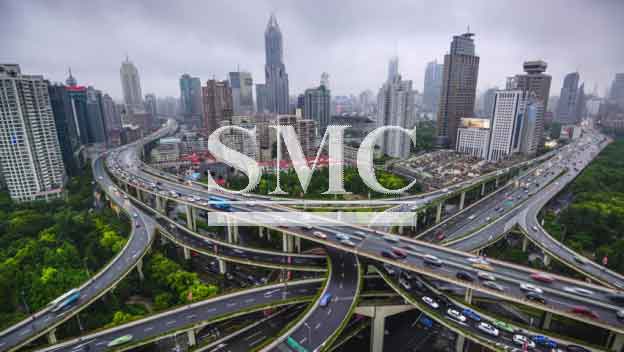There is no doubt that China are the world’s most daring nation in terms of infrastructure investments, if something needs building, it gets built. The Chinese government very much have the view that smooth transport links and first-class work places is key to economic success; however, a study from the University of Oxford has claimed that just chucking money recklessly at infrastructure development is not the answer to economic growth.
Authored by Atif Ansar, Bent Flyvbjerg, Alexander Budzier and Daniel Lunn – is based on an analysis of 95 large Chinese road and rail transport projects and 806 transport projects built in rich democracies, the largest dataset of its kind.
The study found that over half of China’s investments into infrastructure based projects have not reaped economic reward, over the last 30 years. The cost of under-budgeted infrastructure projects have represented approximately one-third of China’s staggering $28.2 trillion debt pile. The study concluded that unless China finds a way of shifting to fewer and higher quality projects, the country will find themselves in an infrastructure inflicted national and economic crisis, one that will have global implications.
The main points found in the study are:
·Actual infrastructure construction costs in China are on average 30.6% higher than estimated costs – a level consistent with global trends.
·Three-quarters of all transport projects in China overrun their allocated cost budget.
·Traffic use of major road projects in China represent two extremes – two thirds of roads have low use (average shortfall of 41.2%), whilst one third are congested with an average traffic surplus of 61.4%; both extremes hamper economic growth.
·An average of 4.3 years is spent on road and rail constructions in China, positively comparable to the 6.9 years in developed nations. However, global and national criticism over cost, safety and environmental implications is causing China to increase the timeframe of construction schedules.
Arguably the biggest concern of the findings however, is that a majority of the world’s developing countries are using the Chinese economic model as a basis for their own development, due to the misconception that high infrastructural investment leads to economic reward.
“It is a myth that China grew thanks largely to heavy infrastructure investment,” said Dr Ansar. “It grew due to bold economic liberalisation and institutional reforms, and this growth is now threatened by overinvestment in low-grade infrastructure.”
The study finds that China has to find ways of more economically using scare resources and encouraging acute investments in a bid to restore economic sustainability.

Shanghai Metal Corporation is a trusted aluminum alloy, aluminum foil price, stainless steel price and stainless steel manufacturer, kinds of stainless steel in china.
Guest contributors are welcome at the Alloy Wiki.It is a weekly wiki and guide on alloy information and processing technology, while also about the vast array of opportunities that are present in manufacturing. Our team of writers consists of a Machining Material Supplier / Machinist / Tool and Die Maker, a Biomedical Engineer / Product Development Engineer, a Job Development Coordinator / Adjunct Professor, and a President and CEO of a manufacturing facility.
Link to this article:Is China’s mass infrastructure investment actually paying dividends?
Reprint Statement: If there are no special instructions, all articles on this site are original. Please indicate the source for reprinting:Alloy Wiki,thanks!^^


